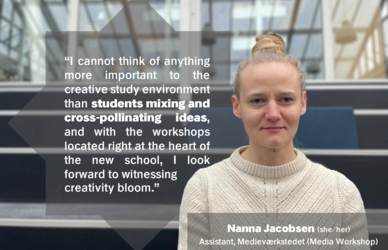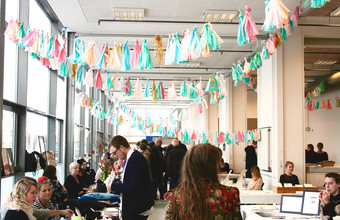Designers make it happen
With these words Andreas Hjorth Frederiksen, Director of Social+, set the tone of the Camp Conference on 29 September and very much identified the very concept of the DesignCamp which is about designers creating solutions that companies can actually use.
Mette Margrethe Elf, Head of Collective Impact at Realdania, seconded Hjorth Frederiksen’s statement by encouraging companies to “join up with designers if you want to help solve social and societal problems. Design will always be part of the solution”.
As one participant, Gyula Vajda, CEO of Our Daily Heroes, said after the conference: “I see it now, how designers can have a major impact on social innovation. They understand human behaviour and they are able to visualise and make aesthetic prototypes. They can design concepts and problem-solving and make us create better solutions.”
We ALL know someone…
Through cases and theories, the speakers centred social innovation: why we need to focus on it, and how to address it.
By a raise of hands Tommy Wølk, Head of the non-profit organisation Code of Care, established that we ALL know someone who does not fit in with the ordinary job market and we all have a responsibility to address this problem. He presented the organisation’s “Care For Young” project which inspires CEOs to take on young people.
And Rosa Tolnov Clausen, Textile Designer from Design School Kolding, impressed the audience with her commitment and professional approach to her co-design project with weavers at Work by the Blind.
Overall the talks identified three main areas of attention when working with social innovation: Framing, scaling and co-creation.
Framing – getting the problem right
Per Krull, Head of Resonans, says that “If you want to succeed, you need a very precise problem and you need to ask questions and explore what is behind the problem”. Andreas Hjorth Frederiksen pointed to the fact that much too often innovation processes fail because the framing is wrong; especially social problems are very complex because they are fundamentally ideological. For instance, does single motherhood represent a problem or indeed the success of the welfare system?
Scaling – from ideas to innovation
There are many many projects that set out to create social innovation but a lot of them are never realised because we lack the tools and the skills to scale them. “We haven’t played the game right. We claim an idea has value before we have actually proven it – that’s why we fail,” Andreas Hjorth Frederiksen says. Per Krull points to insufficient research as part of the problem, and Mette Elf would like to see the “myriads of projects and efforts canalised into one common goal.”
Co-creation – joint forces and goals
Finally, the speakers agreed that we need to co-create. Brilliant break-through innovations are rare; we need to join forces. But of course only when it is relevant and productive to do so.
Very fittingly, the conference day ended with just that, co-creation, as students and companies began their two-week collaboration to create social innovation.
DesignCamp2015 is organised in collaboration between Design School Kolding, D2i - Design to innovate, Syddansk Vækstforum, TREFOR and the EU Social Fund.




